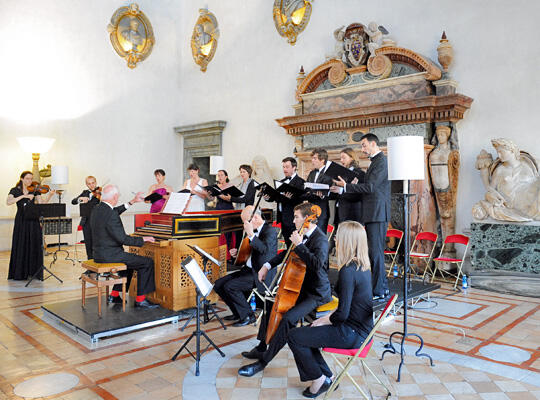WMF Celebrates Rome’s Treasures

Rome never ceases to surprise. It is a modern, thriving city that absorbs more than 6 million visitors each year and yet there are still treasures to explore and places to see that are little known. WMF’s 50th anniversary has been the inspiration for a series of donor trips to visit places that have been a special focus for WMF over the years, and in June, we explored the places in Rome where WMF has assisted in the conservation of ancient, medieval, and Renaissance sites. It was a treat to be one of the staff members introducing the sites to our donors. Each day presented the chance to learn something new about Rome, but perhaps three moments stand out especially strongly for me. The first was not an official visit of the trip, but an occasion to spend a few hours with Marilyn Perry, Chair Emerita of WMF, and Bonnie Burnham, President of WMF. Perhaps no one more than I understand the transformation of WMF from a one-person organization to the strong, international heritage NGO WMF has become. When I worked for Marilyn at the Kress Foundation, I well remember Bonnie Burnham being named Executive Director of the International Fund for Monuments, and the office being in the basement of a building on East 72nd Street. As I stood with Bonnie and Marilyn looking at the Pantheon, I was reminded how extraordinary their combined efforts have been over the years to secure a bright future for WMF. It is not merely a transformation from a basement office to the 24th floor of the Empire State Building, but it is the enthusiasm they engendered for supporting the conservation of monuments around the world and the vision that could show the relationships between heritage of humble and grand proportions. The second moment of the trip that stands out for me was the sequence of visits from the Forum Boarium to the top of the Palatine. We visited the Temple of Hercules, a site on the 1996 World Monuments Watch and the neighboring Temple of Portunus, a site from the 2006 Watch. We then walked past the Arch of Janus, a site that offers an opportunity to speak about the ways in which the Roman Forum, the Forum Boarium, and the Palatine knit together as touchstones of antiquity, rediscovery in the Renaissance, and the complications of presenting sites to the public today. We continued our walk up the hill to the Forum, where we visited Santa Maria Antiqua and the remnants of the Farnese Gardens, specifically the Nympheaum of Rain, the Farnese Aviaries, which were included in the 2014 Watch, and the Casina Farnese. These sites were all the focus of WMF’s contributions to conservation efforts undertaken in collaboration with the Italian Ministry of Culture. These sites also share the common theme of providing opportunities for the public to learn about sites that have been closed for decades and now, as a result of conservation efforts, research, and enhanced interpretation, the public has the chance to learn about places that have been hiding to some extent in plain sight. They were never forgotten, but had become somewhat overlooked in the shadow of other great sites in Rome. Each one of these historic places has a story to tell and WMF can be proud to have assisted in opening these sites to the public. The third memorable element of the trip is something that I am certain was a highlight for every participant. The final event of the trip was a gala evening at the Farnese Palace. This extraordinary Renaissance structure houses the Carracci Gallery, an overwhelmingly beautiful reception hall with a ceiling painting that depicts the Loves of the Gods and is one of the most celebrated Renaissance rooms in Italy. WMF’s partnership with the Italian and French governments is returning this room to its full glory by conserving the ceiling and the wall stuccoes that are of equal artistic importance. A private visit to the Carracci Gallery with Bertrand du Vignaud, who has directed the project for WMF, was in and of itself a special moment. Yet the evening offered a musical program designed by William Christie and performed by Les Arts Florissants, which was truly magical for its intimacy and the way in which the music transported the listener back in time imagining that these notes were written for just these types of spaces. The trip was a tremendous reminder that heritage matters, not simply to conserve historic places, but to remind us of the cultural achievements of the past and inspire us to create music, paintings, buildings, and cities today that are equally resilient.
